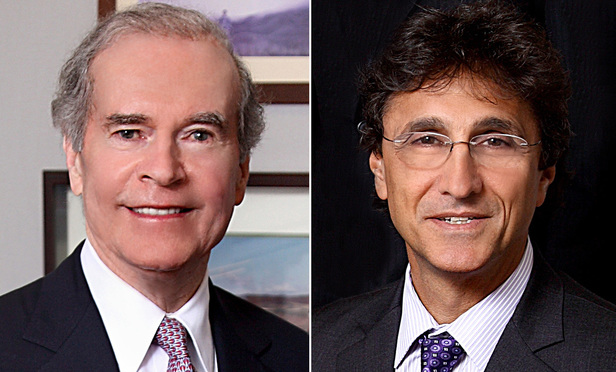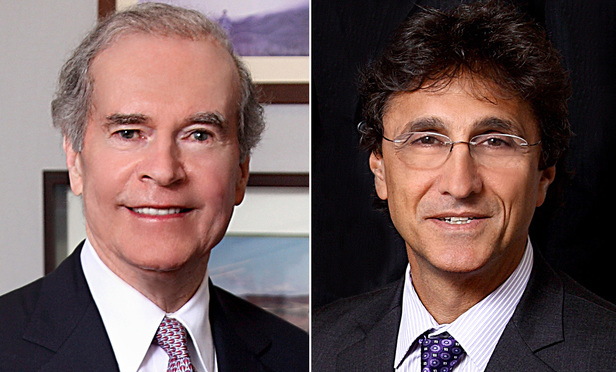Matthew Gaier

February 05, 2018 | New York Law Journal
A Discovery Rule for Cancer CasesMedical Malpractice columnists Thomas A. Moore and Matthew Gaier write: Effective Jan. 31, 2018, New York has adopted a discovery rule applicable to medical malpractice actions stemming from failures to timely diagnose cancer or a malignant tumor.
By Thomas A. Moore and Matthew Gaier
12 minute read

December 04, 2017 | New York Law Journal
Emotional Distress and Right of SepulcherMedical Malpractice columnists Thomas A. Moore and Matthew Gaier write: While recovery for negligent infliction of emotional distress is limited in New York, one area in which such claims have long been permitted involves the interference with the right to the body of a deceased loved one. This right, which exists at common law, is known as the right of sepulcher. A surprising number of actions have been brought against hospitals based upon violations of that right
By Thomas A. Moore and Matthew Gaier
16 minute read

October 02, 2017 | New York Law Journal
Hospital Liability Under Ostensible AgencyMedical Malpractice columnists Thomas A. Moore and Matthew Gaier write: When someone is admitted to a hospital as the patient of a private attending physician, the hospital may still be subject to vicarious liability under the doctrine of ostensible agency for physicians who become involved in the patient's care during the admission. This question commonly arises with anesthesiologists and radiologists, although it may also apply where any physician is assigned by a hospital to provide a service or a consultation.
By Thomas A. Moore and Matthew Gaier
15 minute read

July 31, 2017 | New York Law Journal
The Emergency Room Exception for Vicarious LiabilityIn their Medical Malpractice column, Thomas A. Moore and Matthew Gaier write: While it has long been recognized that a hospital is vicariously liable for the physicians it assigns to patients where a patient seeks treatment not from a particular physician, but from the hospital, some decisions have strictly imposed all of the requirements of ostensible agency. However, this circumstance is not purely one of ostensible agency. Rather, it is a distinct exception that involves aspects of both ostensible agency and agency-in-fact.
By Thomas A. Moore and Matthew Gaier
15 minute read

June 05, 2017 | New York Law Journal
Revisiting New York Case Law on Loss of Chance: Part 2Medical Malpractice columnists Thomas A. Moore and Matthew Gaier write: In addition to delays in diagnosing cancer, cases involving delays in diagnosing or treating cerebral vascular accidents such as strokes or bleeds commonly give rise to claims for loss of chance.
By Thomas A. Moore and Matthew Gaier
13 minute read

April 03, 2017 | New York Law Journal
Revisiting New York Case Law on Loss of Chance: Part 1Medical Malpractice columnists Thomas A. Moore and Matthew Gaier write that recovery for loss of chance—the diminution of an opportunity for a better outcome after a failure to diagnose—has long been a part of the fabric of malpractice actions in New York, but surprisingly, a question has been raised in recent years as to whether New York recognizes such recovery.
By Thomas A. Moore and Matthew Gaier
28 minute read

February 06, 2017 | New York Law Journal
In 'Pullman', Court Once Again Addresses MedMal Summary Judgment StandardsIn their Medical Malpractice column, Thomas A. Moore and Matthew Gaier analyze the Court of Appeals' holding in 'Pullman v. Silverman', which emphatically confirmed the necessity for an expert affidavit to adequately refute the specific allegations in the bills of particulars to be sufficient to establish a moving defendant's entitlement to summary judgment.
By Thomas A. Moore and Matthew Gaier
20 minute read

December 05, 2016 | New York Law Journal
Expert Disclosures: Timely Objections and PreclusionIn their Medical Malpractice column, Thomas A. Moore and Matthew Gaier review some of the principles that may be divined from the decisions interpreting CPLR 3101(d)(1)(i) relating to preclusion of expert testimony based upon untimely or insufficient disclosure, and discuss some Appellate Division decisions applying those principles in malpractice actions.
By Thomas A. Moore and Matthew Gaier
28 minute read

October 03, 2016 | New York Law Journal
Court of Appeals Decision on Sufficiency and Admissibility of EvidenceMedical Malpractice columnists Thomas A. Moore and Matthew Gaier examine the Court of Appeals' recent decision in 'Mazella v. Beals', in which the court addressed issues pertinent to medical malpractice litigation, including the legal sufficiency of evidence of causation and the admissibility of a consent order stemming from charges relating to professional misconduct.
By Thomas A. Moore and Matthew Gaier
20 minute read

August 22, 2016 | New York Law Journal
Late Notices of Claim on Behalf of InfantsIn their Medical Malpractice column, Thomas A. Moore and Matthew Gaier examine two Court of Appeals decisions affirming the denial of motions for late notices of claim on behalf of infants allegedly injured as a result of malpractice around the time of their birth.
By Thomas A. Moore and Matthew Gaier
27 minute read
Trending Stories
- 1Restoring Trust in the Courts Starts in New York
- 2'Pull Back the Curtain': Ex-NFL Players Seek Discovery in Lawsuit Over League's Disability Plan
- 3Tensions Run High at Final Hearing Before Manhattan Congestion Pricing Takes Effect
- 4Improper Removal to Fed. Court Leads to $100K Bill for Blue Cross Blue Shield
- 5Michael Halpern, Beloved Key West Attorney, Dies at 72
More from ALM
- Scan In Progress: Litigators Leverage AI to Screen Prospective Jurors 1 minute read
- Legal Speak at General Counsel Conference East 2024: Match Group's Katie Dugan & Herrick's Carol Goodman 1 minute read
- Legal Speak at General Counsel Conference East 2024: Eric Wall, Executive VP, Syllo 1 minute read



